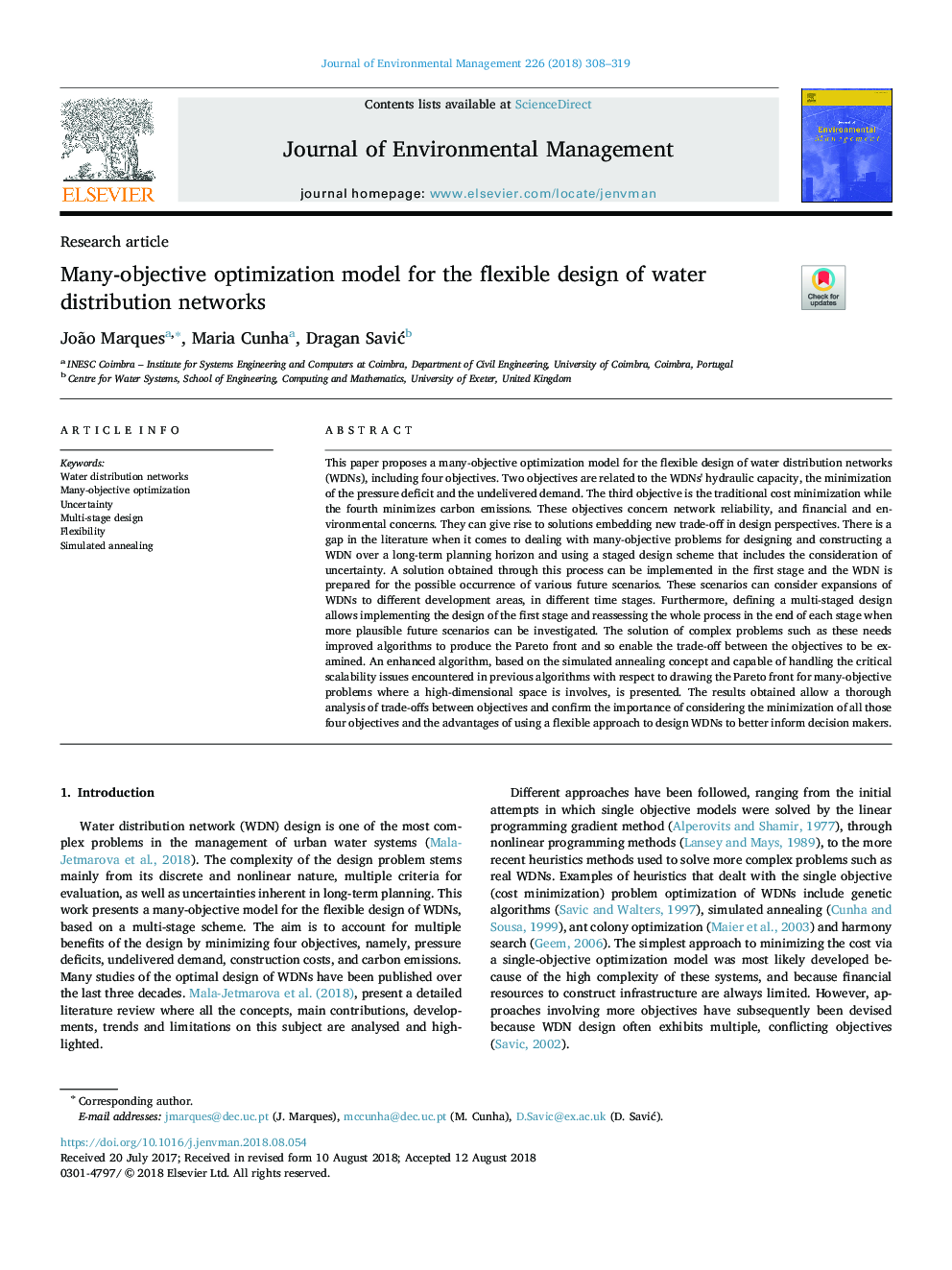| Article ID | Journal | Published Year | Pages | File Type |
|---|---|---|---|---|
| 7475402 | Journal of Environmental Management | 2018 | 12 Pages |
Abstract
This paper proposes a many-objective optimization model for the flexible design of water distribution networks (WDNs), including four objectives. Two objectives are related to the WDNs' hydraulic capacity, the minimization of the pressure deficit and the undelivered demand. The third objective is the traditional cost minimization while the fourth minimizes carbon emissions. These objectives concern network reliability, and financial and environmental concerns. They can give rise to solutions embedding new trade-off in design perspectives. There is a gap in the literature when it comes to dealing with many-objective problems for designing and constructing a WDN over a long-term planning horizon and using a staged design scheme that includes the consideration of uncertainty. A solution obtained through this process can be implemented in the first stage and the WDN is prepared for the possible occurrence of various future scenarios. These scenarios can consider expansions of WDNs to different development areas, in different time stages. Furthermore, defining a multi-staged design allows implementing the design of the first stage and reassessing the whole process in the end of each stage when more plausible future scenarios can be investigated. The solution of complex problems such as these needs improved algorithms to produce the Pareto front and so enable the trade-off between the objectives to be examined. An enhanced algorithm, based on the simulated annealing concept and capable of handling the critical scalability issues encountered in previous algorithms with respect to drawing the Pareto front for many-objective problems where a high-dimensional space is involves, is presented. The results obtained allow a thorough analysis of trade-offs between objectives and confirm the importance of considering the minimization of all those four objectives and the advantages of using a flexible approach to design WDNs to better inform decision makers.
Keywords
Related Topics
Physical Sciences and Engineering
Energy
Renewable Energy, Sustainability and the Environment
Authors
João Marques, Maria Cunha, Dragan SaviÄ,
